The one-mile Self-Guided Forest Management Trail at the northern end of Selmier State Forest features tree identification, successional areas, and timber stand improvement practices. The trail forms loop with parking lots to the northwest and southeast.
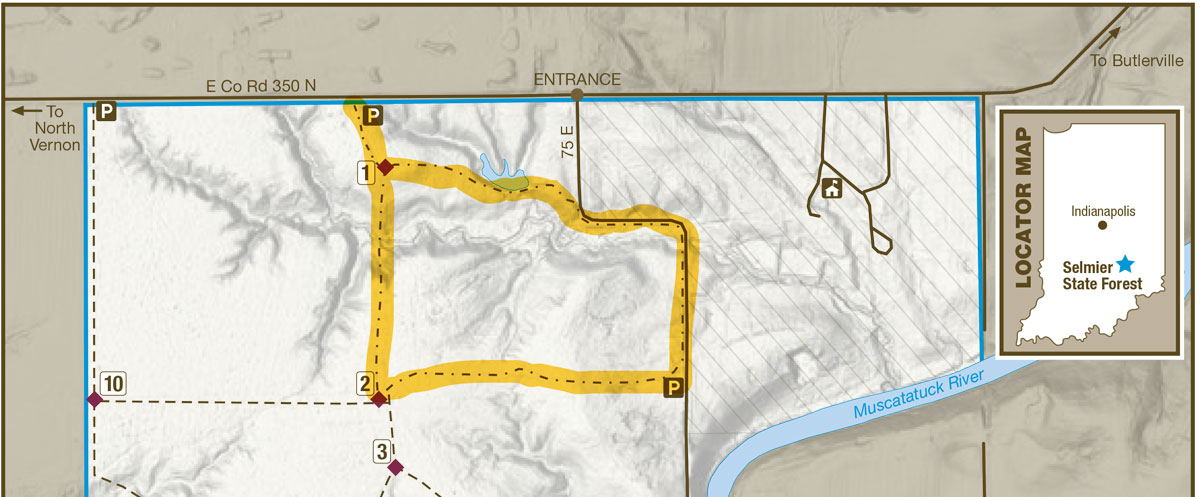
- 1. Forest Management
Selmier State Forest, like all State Forests, is managed for multiple goals that benefit the public and the forest itself. Forest management goals can include outdoor recreation, wildlife habitat, timber harvesting, and watershed protection. As you hike this trail, you’ll see important natural and historical elements of this forest and learn how the Division of Forestry implements science-backed forest management to sustain this forest for generations to come.
- 2. Human Impacts
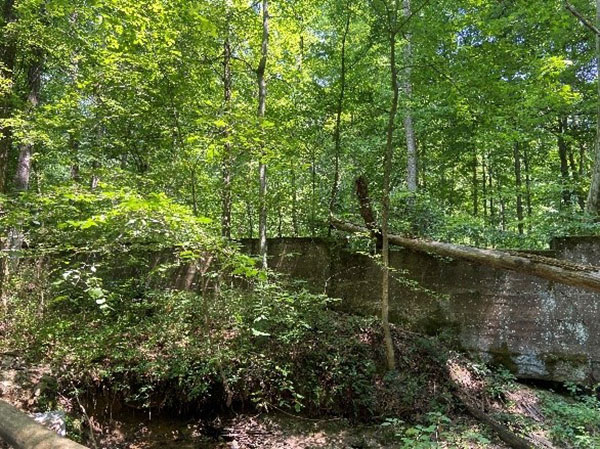
Walking along this trail you can see evidence of past human activity. Straight ahead is the remains of an old dam built by Frank Selmier when he owned this property in the 1920s and 1930s. This part of the trail and the surrounding area were under water and most of the northern portion of Selmier State Forest was cleared at one time. As you continue along this trail, you will see other signs of human activity including roads, old fences, and stumps from past tree harvests.
- 3. Tulip Trees
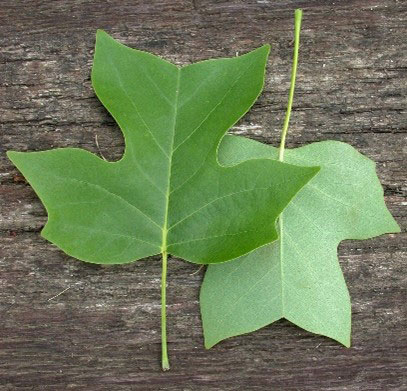
The tulip tree (Liriodendron tulipifera), also known as the yellow poplar, is the state tree of Indiana. They are the tallest-growing species east of the Mississippi River and are second only to sycamore trees in mass. The trunk of the tulip tree is very straight and the bark is grayish in color with white ridges The wood is light, soft, and easily worked, making it a valuable hardwood species in the United States. Early pioneers hewed logs for their cabins mostly from tulip trees.
- 4. Evergreens and Erosion
In past decades, trees like the white pine (Pinus strobus) before you were frequently planted to combat erosion. Many pine species could grow well in sloping areas or degraded soils that struggled to regenerate native hardwood species. Landowner Frank Selmier planted nine pine plantations on this property from 1929 – 1943, mostly composed of red, white, scotch, and jack pine. As the pines grew, their roots stabilized the soil. Decomposing organic matter added nutrients back in and the growing conditions improved enough to harvest the pines and restore the native hardwood forest.
- 5. Spicebush
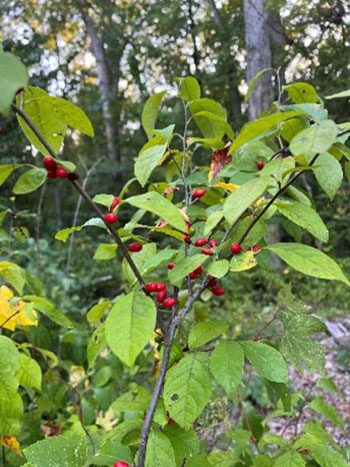
Spicebush (Lindera benzoin) is a native, fast-growing shrub that is highly valuable for wildlife. It produces a bright red berry in the late summer/early fall that has nearly 50% fat content and is much more nutritious than the fruits of invasive bush honeysuckle. Spicebush berries are a highly valuable food source for migrating birds who require lots of energy to complete their long journeys. This shrub is also a favorite larval host plant for butterflies like the spicebush swallowtail. Spicebush is well known for its aromatic leaves and twigs. Smell for yourself!
- 6. Timber Stand Improvement (TSI)
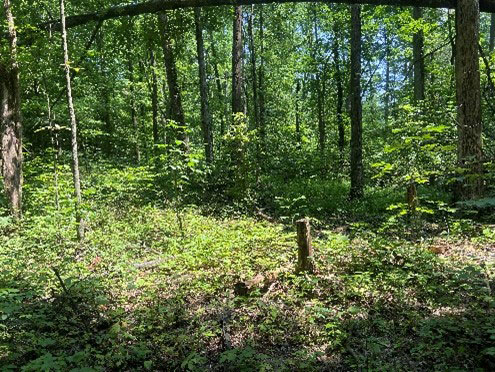
TSI, also called Forest Stand Improvement, helps increase forest productivity, vigor, and quality. TSI activities include deadening or removing low value/cull trees, thinning overcrowded stands, and removing some, but not all, damaging vines from high quality trees. These activities can reduce the competition for resources among remaining trees, yielding higher quality timber resources and wildlife habitat. As you explore the trail, look for signs of past TSI work.
- 7. Timber Harvesting

The Division of Forestry deploys timber harvesting as a management tool to improve the health and composition of the forest. Selective harvesting can reduce overcrowding and open gaps in the canopy, creating better growing conditions for the remaining trees. Cutting regeneration openings allows for ample sunlight to reach the forest floor, promoting the germination of seeds and growth of less shade-tolerant tree species like oaks. The highest quality trees are not harvested, but left to continue providing habitat, food, and seeds for the forest in the future. Learn more about timber harvesting on State Forest lands.
- 8. Best Management Practices (BMPs)
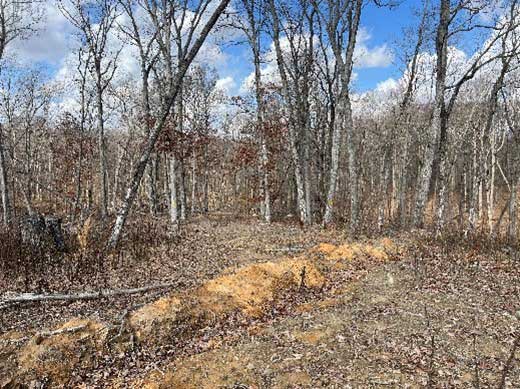
The implementation of BMPs can conserve soil and help prevent erosion during management actions like a timber harvest. These practices include installing waterbars to divert runoff from trails and seeding areas prone to erosion. All timber harvests on State Forest lands, even small harvests in flat areas like this one from 2017, require the implementation of BMPs to protect the local soil and water quality.
- 9. Snags and Fallen Logs
A fallen or standing dead tree still supports lots of life in the forest. These decaying trunks are slowly being reduced to organic matter, which will enrich the soil and provide nutrients for nearby trees and plants. A fallen log also provides cover for a variety of wildlife species and food for decomposers like fungi and wood-eating insects. Standing snags are incredibly important shelters for roosting bats and cavity-nesting birds like woodpeckers. Look for signs of life on fallen trees as you hike, you’ll be surprised by how many there are!
- 10. American Beech
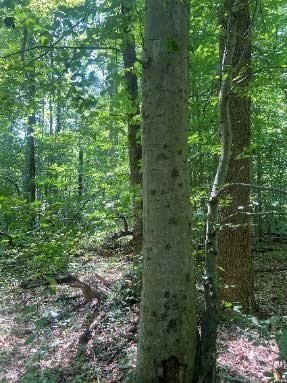
American beech (Fagus grandifolia) is easily recognized by its smooth, gray bark. The three-sided nut of the beech is a favorite food for squirrels, turkey, and birds. This species often becomes hollow, making it an excellent den tree for a wide variety of wildlife, such as barred owls and raccoons. The quality of beech wood is fair and is widely used for inexpensive furniture.
- 11. Access Roads
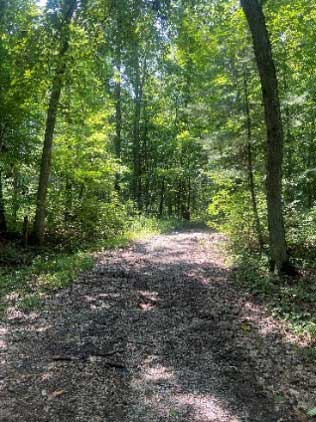
Access roads provide many benefits to the woods and the woodland owner. They provide easy travel through the forest to check on fallen trees, woodland growth, and the general condition of the area. They are also used for hiking and hunting trails (like the one you are on now), wildlife habitat enhancement, and barriers to fire.
- 12. Sassafras
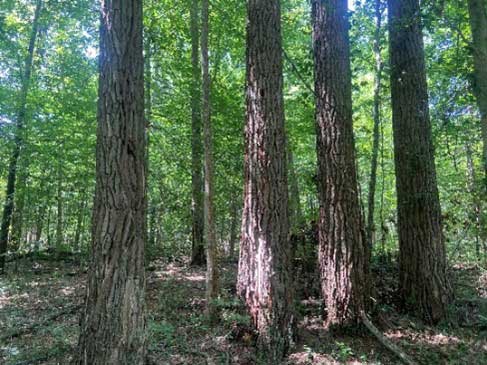
Sassafras (Sassafras albidum) is unusual because of its three separate leaf types: three lobed, mitten, and egg shaped. See if you can find all three types. Bark from the roots of the sassafras tree is used for candy flavoring, brewing tea, and most famously, root beer.
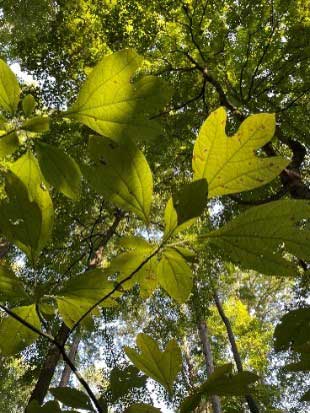
- 13. Invasive Species Management
Invasive species like multiflora rose and winter creeper spread quickly and take up the space and resources necessary for a diversity of native plants to grow. Removing invasive plants and preventing them from returning is a labor-intensive process, often involving a combination of physical and chemical methods with several applications. If you recognize any of these common invasive species from around your home, investigate the best methods for removing them!
- 14. Black Walnut
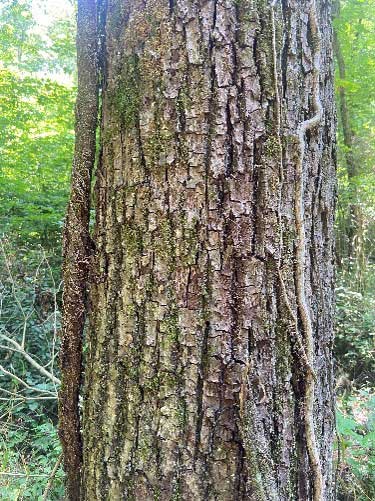
Black walnut (Juglans nigra)is one of the most valuable trees in Indiana’s forests. This slow growing tree produces a dark, chocolate brown heartwood used in fine furniture, gun stocks, cabinets, caskets, and a host of other high value products. The black walnut fruit is a nut that is sweet and edible, a favorite of gray and fox squirrels. The thick hulls of the walnut can be used as a dye and a cleaning agent for jet engines. Find some walnuts and hulls on the ground around you for a closer look!
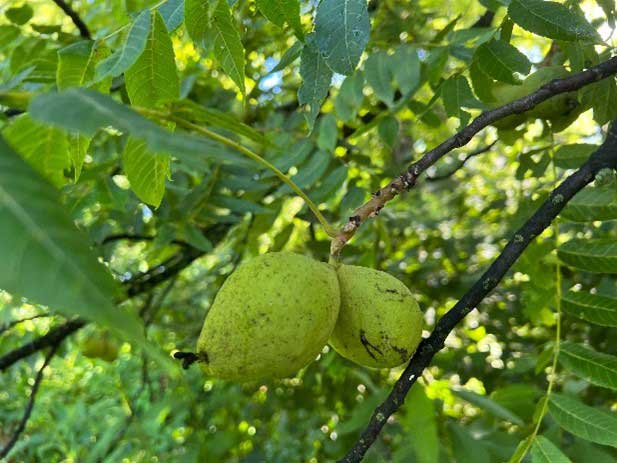
- 15. Oaks
White oak
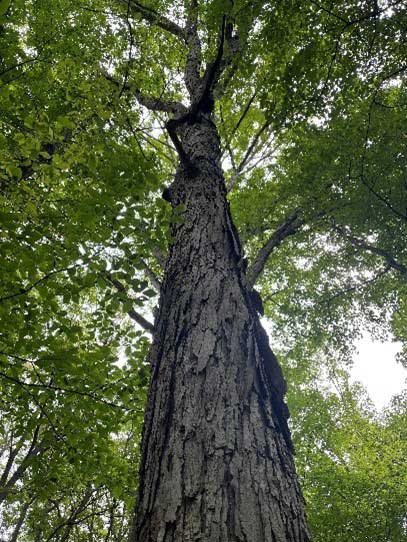

Some of the most important Indiana tree species for timber and wildlife habitat are oaks. They provide high value wood used in flooring, fine furniture, and barrels. They also produce acorns, a long lasting, highly utilized food source for a diversity of wildlife. Oak species fall into either the red or white oak group. Generally, red oak species have leaves with pointed lobes or bristle tips, furrowed bark, and bitter acorns. White oak species have leaves with rounded lobes, scaly bark, and sweeter acorns. Look at the oaks around you and see if you can identify which group they belong to.
Red oak
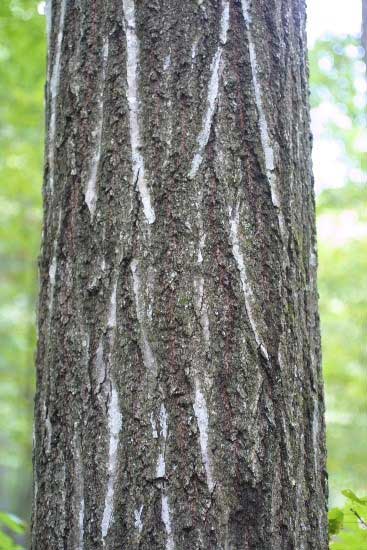
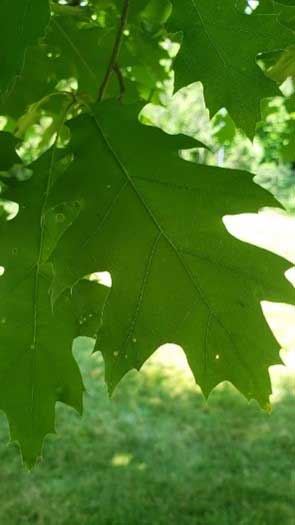
- 16. Ponds on Selmier
All of the ponds you see on this trail are man-made, built for former property owner Frank Selmier in the 1920s and 1930s. These ponds added an aesthetic value to the property, but they are also an important water source for many wildlife species like deer, turkeys, and squirrels. Ponds with cavity nest boxes like the two seen here can also attract wood ducks. The predator guards on the poles of these nest boxes protect the nesting female and her eggs.
- 17. The Cooling Effects of Trees
Trees provide excellent natural cooling. They lower surface and air temperatures by creating shade and performing evapotranspiration (the process through which water is taken up from the ground by tree roots and released into the atmosphere as water vapor through tree leaves). At peak temperatures, areas in tree shade may be 20 – 45 °F cooler than unshaded areas. Feel for temperature differences as you hike this trail!
- Additional Sources
- Using Trees and Vegetation to Reduce Heat Islands. United States Environmental Protection Agency. 25 October 2022.
- Plant spicebush, give a bird one more day! Audubon North Carolina – native Plant Profiles. 2015.
- Indiana Logging & Forestry Best Management Practices 2022 BMP Field Guide. Indiana Department of Natural Resources. Division of Forestry. 2022.
- Weeks, Sally S., Harmon P. Weeks, and George R. Parker. 2010. Native Trees of the Midwest: Identification, Wildlife Values, & Landscaping Use. Purdue University.
- Stewardship Notes: Erosion Control. Indiana Division of Forestry.
- Stewardship Notes: Timber Stand Improvement. Indiana Division of Forestry.
- Timber Stand Improvement, A Guide to Improving Your Woods. Missouri Department of Conservation. July 2021.
